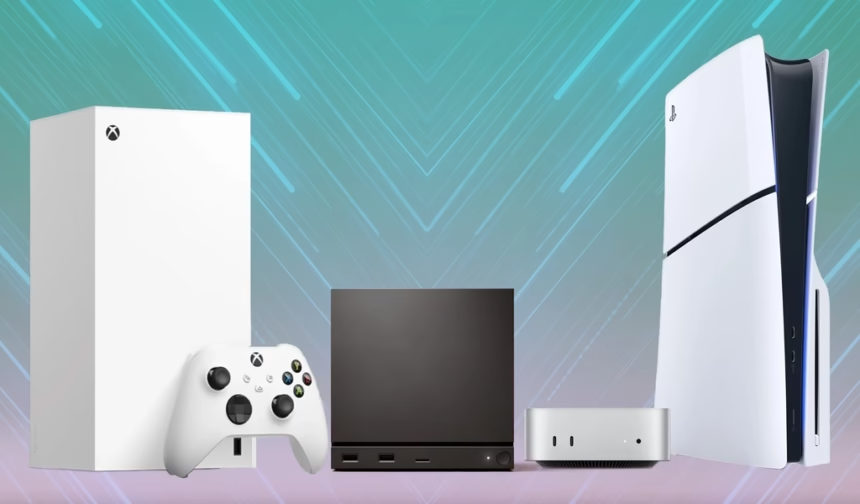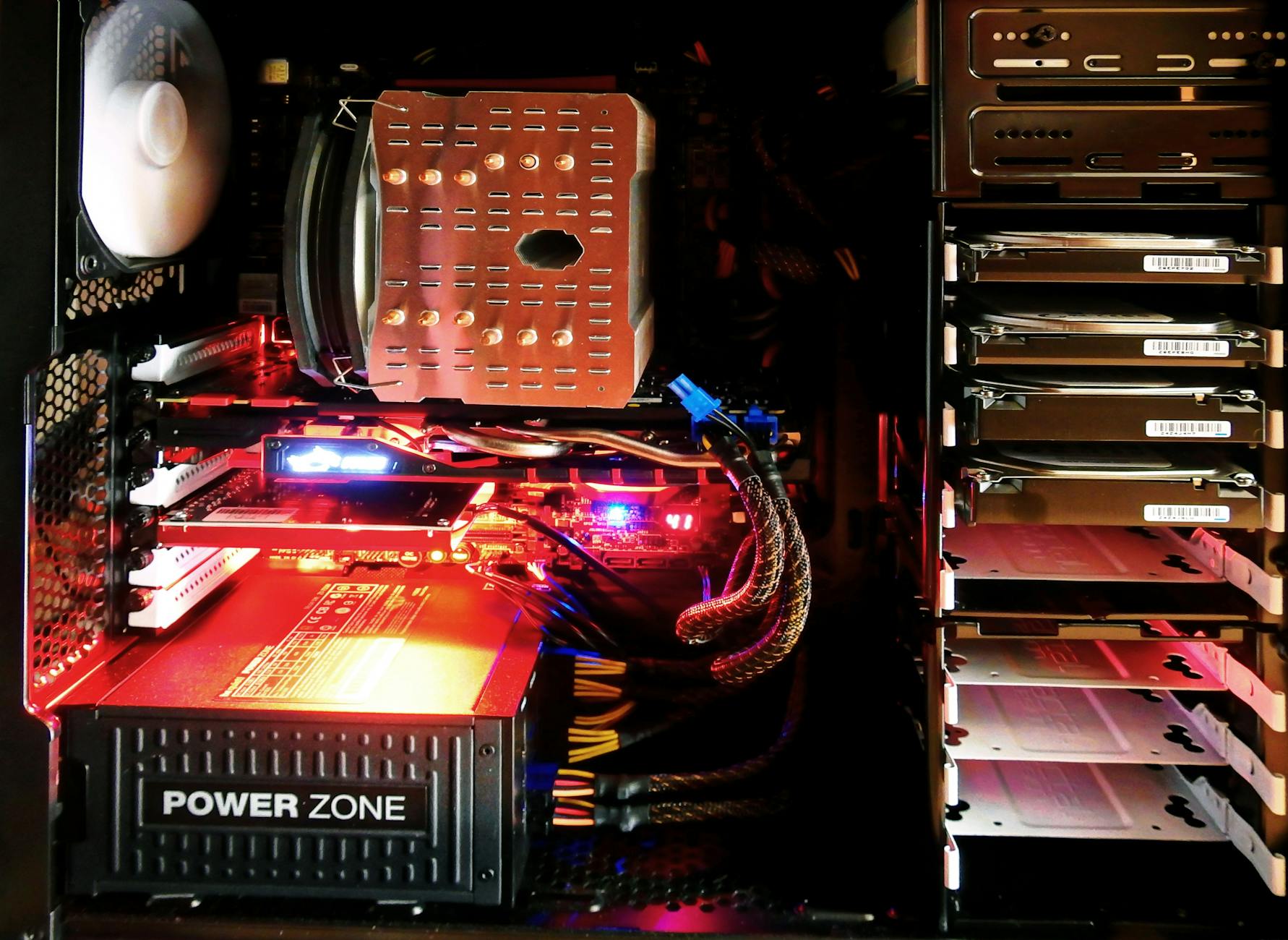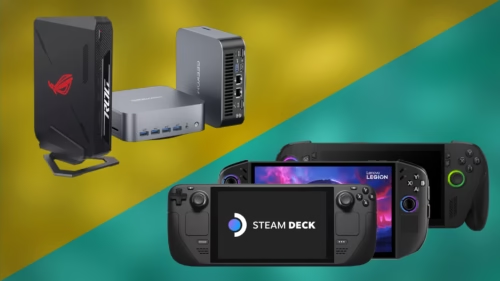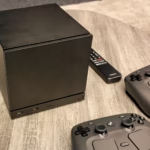- What does a steam machine do? Quick answers for gaming and cleaning
- Gaming: what a steam machine does
- Cleaning and health: what a steam machine does
- What does the Steam Machine do?
- How to make a Steam Machine at home?
- For gamers: Build or buy a Steam Machine in 2025 (HTPC and small form factor PC)
- Is a Steam Machine a PC?
- How big is the Steam Machine?
- Steam Machine specs by budget and quiet cooling tips
- Set up for couch gaming: Big Picture Mode, controllers, TV settings, and low latency
- Top picks and price guide for 2025 mini PCs and HTPCs (with Product schema)
- For cleaning and health: Choose the right steam machine and use it safely
- Care and maintenance
- Product picks with schema: steam cleaners
- Steam machine for nose and face: benefits, limits, and safe use
- Product picks with schema: facial steamers
- Steam Machine vs Steam Deck vs Mini PC vs Console: which is best for you?
- Performance and value in 2025
- Ease of setup and living room comfort
- Upgrades, warranty, and long-term costs
- Glossary and quick notes
- FAQs
- What does the Steam Machine do?
- Is a Steam Machine a PC?
- How big is the Steam Machine?
- How to make a Steam Machine at home?
- Conclusion
A steam machine means two different things. For gamers, it is a compact PC that runs Steam on a TV. For cleaning and health, it is a device that turns water into hot steam for floors, fabric, and sometimes face care.
This guide covers both. It shows how to build or buy a living room Steam Machine for 2025, and how to choose a safe steam cleaner or facial steamer. It includes specs, prices, and safety steps.
What does a steam machine do? Quick answers for gaming and cleaning
Photo by Pixabay
Gaming: what a steam machine does
- Plays your PC games from Steam on a TV or monitor, using a compact PC.
- Runs SteamOS or Windows; supports controllers in Big Picture Mode.
- Works like a console in your living room, but you can upgrade parts and settings.
- Great for couch co-op, indie games, and esports with low input lag.
For context on the latest attempts, see Valve’s new hardware coverage in Polygon’s report on a new Steam Machine and hardware family and IGN’s hands-on first impressions.
Cleaning and health: what a steam machine does
- Heats water to make steam that loosens grease and grime.
- It can sanitize if the steam is hot enough and sits on the spot long enough.
- Reaches into grout lines, fabric fibers, and tight corners without harsh chemicals.
- For the face or nose, warm steam helps hydrate skin and ease congestion, but it is not a cure.
For buying help, compare lab-tested picks in Consumer Reports’ handheld steam cleaners list and long-term tests from The Spruce on the best steam cleaners.
What does the Steam Machine do?
A Steam Machine for gaming is a small PC that runs Steam on your TV. It behaves like a console but with PC flexibility, upgrades, and mods. A steam machine for cleaning uses pressurized or hot steam to loosen dirt, lift stains, and help sanitize hard surfaces and fabrics. The term fits both, so context matters.
SEE ALSO: Thai Gamers Flocking to RedShop Online for Gaming IDs and Card Games
How to make a Steam Machine at home?
For gaming, pick a small form factor case, a mini-ITX motherboard, a modern CPU with strong integrated graphics or a short dGPU, 16 GB RAM, and an NVMe SSD. Install Windows or SteamOS, then use Big Picture Mode and pair a controller. For cleaning, do not build pressurized steam boilers at home. Buy a certified steam cleaner or facial steamer instead, since DIY boilers can explode or burn.
For gamers: Build or buy a Steam Machine in 2025 (HTPC and small form factor PC)
Valve’s Steam Machine launched in 2015 with OEM partners and Linux-based SteamOS. It failed due to limited game support, high prices, and mixed branding. What replaced it: the portable Steam Deck, compact Windows mini PCs, and DIY HTPCs for the living room. Reports suggest a new wave of hardware is coming, including a console-style PC some call a Steam Machine. See updates at Tom’s Guide’s live coverage and a broader look at the family at CNET’s preview of Steam Frame, Machine, and Controller.
Is a Steam Machine a PC?
Yes. It is a PC in a small case, meant for the living room. The original Valve Steam Machine was a Linux box with SteamOS, but OEM units ended. In 2025, the term usually means a compact Windows or SteamOS PC that runs Steam on your TV.
How big is the Steam Machine?
Tiny mini PCs are about 0.8 to 2 liters, roughly 4.5 by 4.5 by 2 inches. Small form factor HTPC cases are often 7 to 10 liters, around 9 by 8 by 4 inches. For reference, a PS5 is roughly 7.2 liters and an Xbox Series X about 6.5 liters. Quiet builds can idle near 20 to 25 dBA, gaming loads can reach 35 to 45 dBA, and good airflow with dust filters helps.
Steam Machine specs by budget and quiet cooling tips
- Budget 1080p: modern 6-core CPU or strong iGPU from a recent APU, 16 GB RAM, 512 GB to 1 TB NVMe. Aim for 60 fps in esports and indie games. Use 92 to 120 mm fans and set a gentle curve.
- Mid 1080p and 1440p: 6 to 8 core CPU, midrange GPU in short or low-profile design, 16 to 32 GB RAM, 1 TB NVMe. Pick mesh cases, use quality thermal paste, and undervolt the GPU to cut heat and noise.
- High 1440p and 4K-lite: 8+ core CPU, strong GPU that fits case length and power, 32 GB RAM, 1 to 2 TB NVMe. Ensure 2 to 3 clear intake and exhaust paths, and avoid heat soak inside TV cabinets.
Small add-ons: Wi‑Fi 6 or 6E, Bluetooth 5 for controllers, a quiet PSU, and rubber feet to reduce vibration.
Set up for couch gaming: Big Picture Mode, controllers, TV settings, and low latency
- Connect the HDMI to the TV. Use HDMI 2.1 if available.
- Enable TV Game Mode, set 60 or 120 Hz, and match resolution.
- Install Steam, run Big Picture Mode or SteamOS, and pair Xbox, DualSense, or Steam Controller.
- Prefer 2.4 GHz dongles over Bluetooth for lower latency.
- Use Ethernet or strong Wi‑Fi 6.
- Cap frame rates to reduce heat and noise, and elevate the case for airflow.
- Route cables behind furniture and leave clear walking paths.
For historical and current context, see IGN’s first impressions of the latest Steam Machine concept.
Top picks and price guide for 2025 mini PCs and HTPCs (with Product schema)
- Entry, 400 to 700 dollars: iGPU mini PCs for esports and indie titles at 1080p.
- Mid, 800 to 1,200 dollars: small dGPU or stronger APU for 1080p high and some 1440p.
- High, 1,300 to 2,000+ dollars: compact dGPU builds for higher refresh at 1440p and lighter 4K.
Used market tips: check GPU hours and fan noise, inspect for dust, and watch thermals. Favor models with easy SSD and RAM access. Warranty and upgradability matter, including open M.2 slots and SO-DIMM RAM.
Example recommendations, based on size, ports, and upgradability:
- Compact APU mini PC: 8-core APU with RDNA iGPU, 16 GB SO-DIMM RAM, dual M.2, Wi‑Fi 6E.
- Short-GPU SFF build: mini-ITX case under 10 liters, 6 to 8 core CPU, short dual-fan GPU, 650 W SFX PSU.
- Quiet HTPC case: mesh panels, two 120 mm fans, 32 GB RAM, 1–2 TB NVMe, rubber feet.
For cleaning and health: Choose the right steam machine and use it safely
A steam cleaner heats water to produce steam that loosens soil and oils. It can reduce germs with heat and time. It is not a substitute for disinfectant in all cases. Use steam as part of a simple routine.
Types:
- Steam mop: fast for sealed hard floors.
- Handheld: good for fixtures, grout, and tight spots.
- Canister: higher output for kitchens, bathrooms, cars, and upholstery.
- Commercial: long duty cycles, higher pressure, trained use.
Where it helps:
- Kitchens: grease on ranges, ovens, hoods, and backsplashes.
- Bathrooms: tile, grout, glass, and fixtures.
- Fabric and upholstery: spot treatment, pet messes, car seats.
- Mattresses and rugs: refresh and reduce odors, then extract moisture.
Where to avoid:
- Unsealed wood floors and unsealed stone.
- Delicate finishes that cloud with heat.
- Electronics and outlets.
- Paint that can bubble, loosen grout, and lift laminate.
Safety:
- Wear gloves and closed shoes.
- Keep pets and kids away during use.
- Use the right nozzle at a slight angle to reduce spit and pooling.
- Wipe as you go to remove loosened soil.
- Let surfaces dry, and ventilate the room.
Buying help: see long-term user tests from The Spruce on the best steam cleaners and broad picks on Amazon’s steam cleaner best sellers page.
Care and maintenance
- Use distilled or low-mineral water to reduce scale.
- Purge the hose before cleaning to remove condensed water.
- Empty the tank after use, and air the unit open.
- Descale if the manual allows.
- Store cool and dry with the cord wrapped loosely.
Product picks with schema: steam cleaners
Three useful categories with examples and tradeoffs:
- Handheld detailer: quick spot cleaning, lightweight, short bursts.
- Canister all-rounder: higher output, longer hoses, longer duty cycle.
- Steam mop: fast floor refresh on sealed surfaces.
SEE ALSO: Digital Gaming Exploring the Creative World of Video Games
Steam machine for nose and face: benefits, limits, and safe use
Warm steam can hydrate the outer skin layer and soften debris in pores. It may temporarily ease nasal congestion by humidifying passages. It is not a cure for infection or chronic conditions.
Safe use:
- Sit at a comfortable distance. Keep the steam warm, not hot.
- Limit sessions to 5 to 10 minutes.
- Close your eyes during facial steaming.
- Do not use on sunburn, eczema flares, rosacea flares, open wounds, or if heat triggers migraines.
- Children should not use facial steamers without medical advice.
After care:
- Rinse with cool water.
- Apply a simple moisturizer.
- Clean the steamer and let it dry.
Product picks with schema: facial steamers
- Compact facial steamer: small tank, warm steam for short sessions.
- Steam inhaler cup: targeted nose and mouth, often with adjustable vents.
- Full-size tabletop unit: larger tank, longer run time.
Steam Machine vs Steam Deck vs Mini PC vs Console: which is best for you?
- Steam Machine mini PC: high flexibility, strong performance with the right GPU, full Windows or SteamOS. Best for TV-first PC gaming and media.
- Steam Deck: portable, dockable, and great for indie and older AAA at 800p to 1080p. Runs SteamOS with Proton compatibility.
- Mini PC with Windows: wide game support, easy apps, and simple streaming. Can outpace a Deck with a dGPU, but costs more.
- Console: fixed hardware, low price for the performance, plug-and-play with strong exclusives.
- Mods and emulation: easiest on Windows mini PCs and HTPCs. Steam Deck supports many mods too.
- Streaming and “Steam Frame” style thin clients: use Moonlight or Steam Remote Play to a small client at the TV while the main PC stays in another room.
For the latest signals on Valve’s hardware direction, see Tom’s Guide’s live updates and Polygon’s coverage of the new Steam Machine push.
Performance and value in 2025
- Steam Deck: targets 30 to 60 fps at medium settings at 800p to 1080p when docked.
- Mini PC with dGPU: 1080p high to 1440p medium-high, often 60 to 120 fps, well ahead of Deck performance.
- Steam Machine SFF build: similar to mini PC with more upgrade room.
- Console: balanced for 4K upscaling and 60 fps modes on many titles, strong value for price.
Ease of setup and living room comfort
- Console: simplest setup with one HDMI and a controller.
- Steam Deck: dock to HDMI, pair a controller, and use it like a console.
- Mini PC or HTPC: more setup, more control, and best app support. Big Picture Mode makes it TV-friendly.
- Comfort tips: seat with lumbar support, charge controllers in a dock, and secure cables along furniture edges.
Upgrades, warranty, and long-term costs
- Consoles: limited upgrades, rely on external storage, typical warranty is 1 year.
- Steam Deck: storage and fan replacements are possible; community repair support is strong.
- Mini PCs and HTPCs: RAM and SSD upgrades are common, some support GPU swaps, and warranties vary by brand.
- Electricity use: handhelds sip power, small PCs use more under load, and dGPUs use the most. Over time, parts like fans and SSDs may need replacement.
Glossary and quick notes
- Steam Machine (gaming): a small PC for TV gaming using Steam.
- HTPC: home theater PC, focused on media and couch gaming.
- Big Picture Mode: Steam’s TV UI for controllers.
- SteamOS: Linux-based OS by Valve.
- Steam Controller: Valve’s controller with trackpads; legacy support continues.
- Steam cleaner machine: a device that uses hot steam for cleaning and sanitizing.
- Steam mop vs canister: mop is fast for floors, canister offers higher output and versatility.
- Facial steamer or steam inhaler: a device for warm, focused steam on the face and nose.
FAQs
What does the Steam Machine do?
A gaming Steam Machine runs Steam games on a TV through a compact PC. It acts like a console but supports upgrades, mods, and Windows or SteamOS. A cleaning steam machine turns water into hot steam to loosen dirt and help sanitize some surfaces. The term covers both categories.
Is a Steam Machine a PC?
Yes, in gaming use, it is a small PC designed for the living room. It can run Windows or SteamOS and supports Big Picture Mode, controllers, and TV output.
How big is the Steam Machine?
Most mini PCs are 0.8 to 2 liters, while SFF cases run 7 to 10 liters. That is near the size of current consoles, with noise levels from quiet at idle to moderate under load.
How to make a Steam Machine at home?
Build a mini-ITX PC with a modern CPU, 16 GB RAM, and NVMe storage, then install SteamOS or Windows and use Big Picture Mode. Do not attempt to build a pressurized steam cleaner at home; buy a certified unit for safety.
Conclusion
A steam machine can be a compact gaming PC for the living room, or a hot steam cleaner for your home. The gaming path favors mini PCs, HTPCs, and the Steam Deck for portability. The cleaning path favors canister or handheld units matched to the job and surface. Pick based on size, noise, and safety. Set a simple plan, keep maintenance easy, and enjoy the benefits on your screen or your floors.


















